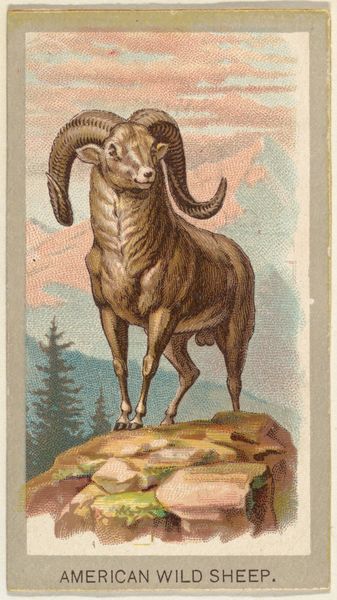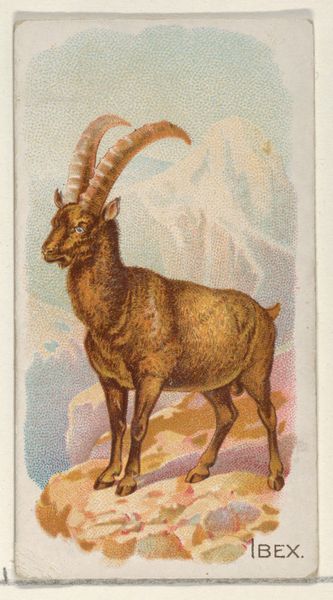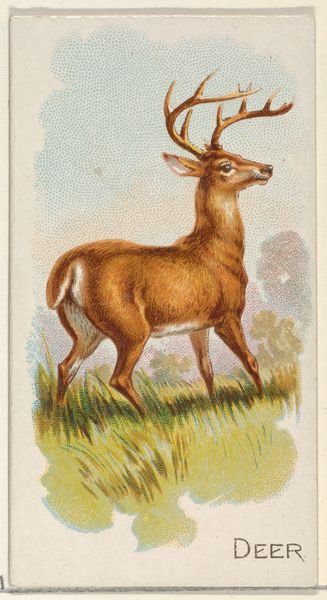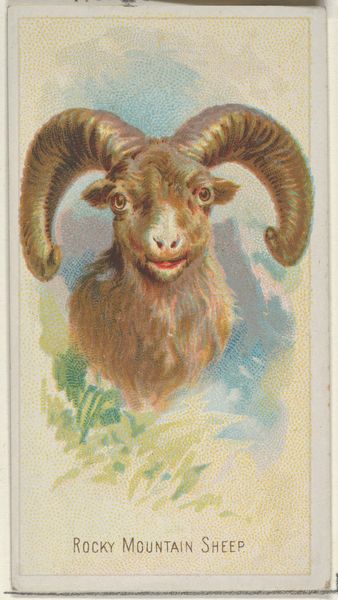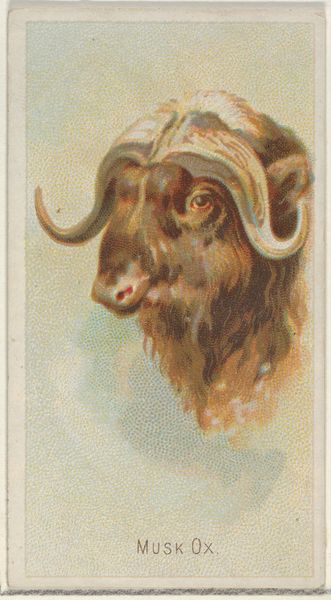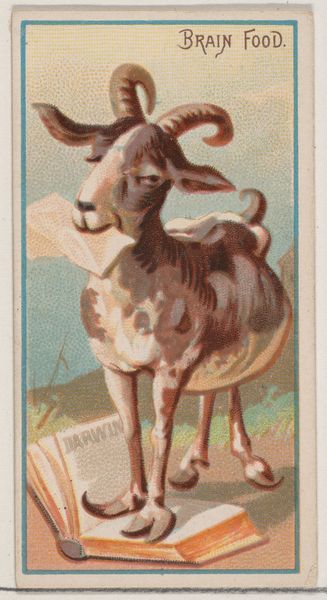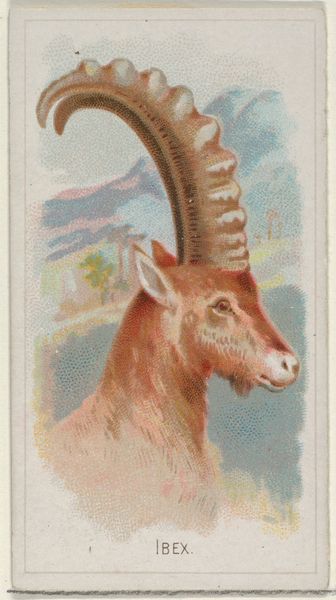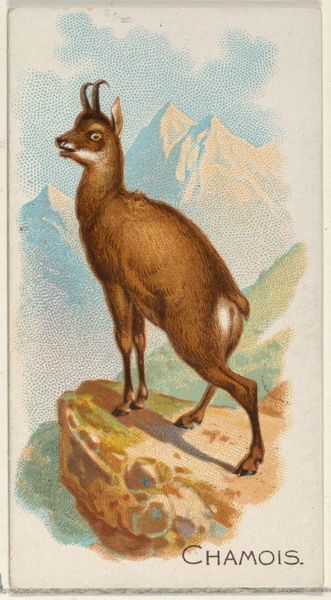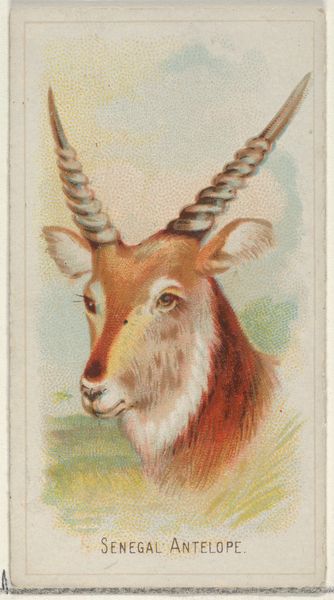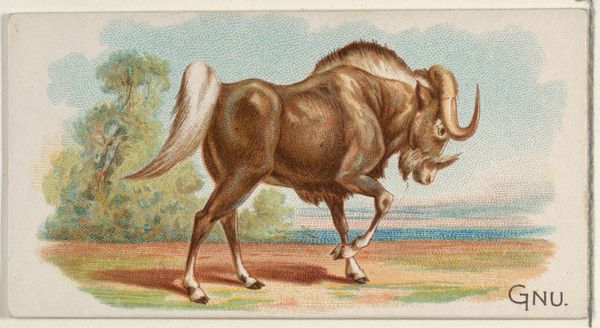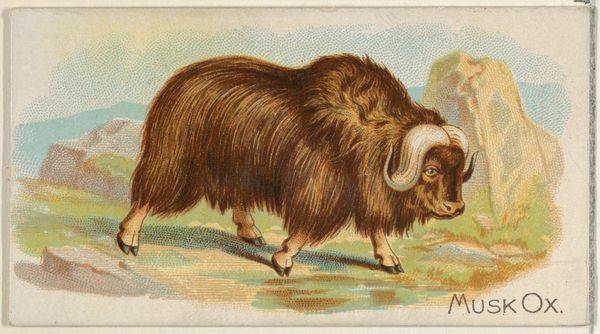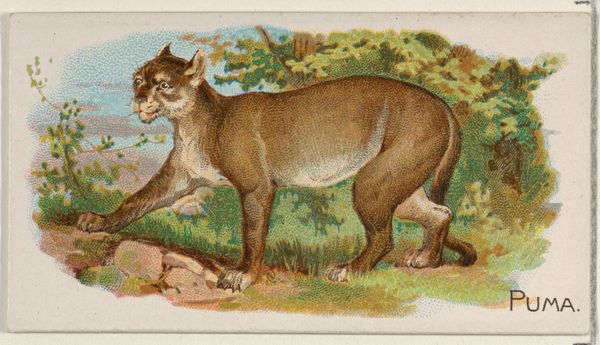
Bighorn, from the Quadrupeds series (N21) for Allen & Ginter Cigarettes 1890
0:00
0:00
drawing, coloured-pencil, print, watercolor
#
drawing
#
coloured-pencil
# print
#
impressionism
#
landscape
#
watercolor
#
coloured pencil
#
watercolour illustration
#
realism
Dimensions: Sheet: 2 3/4 x 1 1/2 in. (7 x 3.8 cm)
Copyright: Public Domain
Curator: Let’s turn our attention to this delightful image, entitled "Bighorn, from the Quadrupeds series (N21) for Allen & Ginter Cigarettes." It’s dated 1890. Editor: Well, it's charming! It reminds me a bit of storybook illustrations, particularly with the soft color palette and the almost comical rendering of the bighorn sheep’s horns. Curator: Indeed. The artist has masterfully employed coloured pencil and watercolor to create a visually appealing and relatively realistic image, at least concerning the sheep itself. It presents a fine balance between the animal’s intrinsic structure and the aesthetic considerations suitable for commercial use. Editor: That’s fascinating. The subject’s positioning on a craggy precipice suggests something, perhaps rugged individualism and, knowing it was made as part of an advertising campaign for cigarettes, something even masculine, but the medium betrays it as something else. What was the effect, do you imagine, on a public that consumes it through printed cigarette cards? Curator: The commercial aspect of this image is rather intriguing, isn't it? These cigarette cards often served as collectables, popularizing both the animal kingdom and a culture of refined tastes among cigarette consumers. It places the exotic animal in the daily lives of people at the turn of the century. This is further shown by it's distribution through an economy powered by international expositions that often traded in exotic displays, for commercial profit. Editor: Absolutely. It’s hard not to see this gentle giant—as represented in print— as both emblem and commodity of the 19th century's obsession with capturing, defining, and owning pieces of the ‘wild’ world. The sheep rendered docile by aesthetic intention and industrial process. Curator: Certainly. While my emphasis is naturally drawn to formal artistic composition—the subtle interplay of light and shadow and delicate lines— it's also very compelling how this imagery served within its socio-historical context to build and negotiate a new sense of the relationship between commerce, culture and nature. Editor: A dual perspective allows us, hopefully, a deeper appreciation for works produced at the juncture of artistic expression and economic incentives, helping us better assess how consumer culture informs society and art history.
Comments
No comments
Be the first to comment and join the conversation on the ultimate creative platform.
